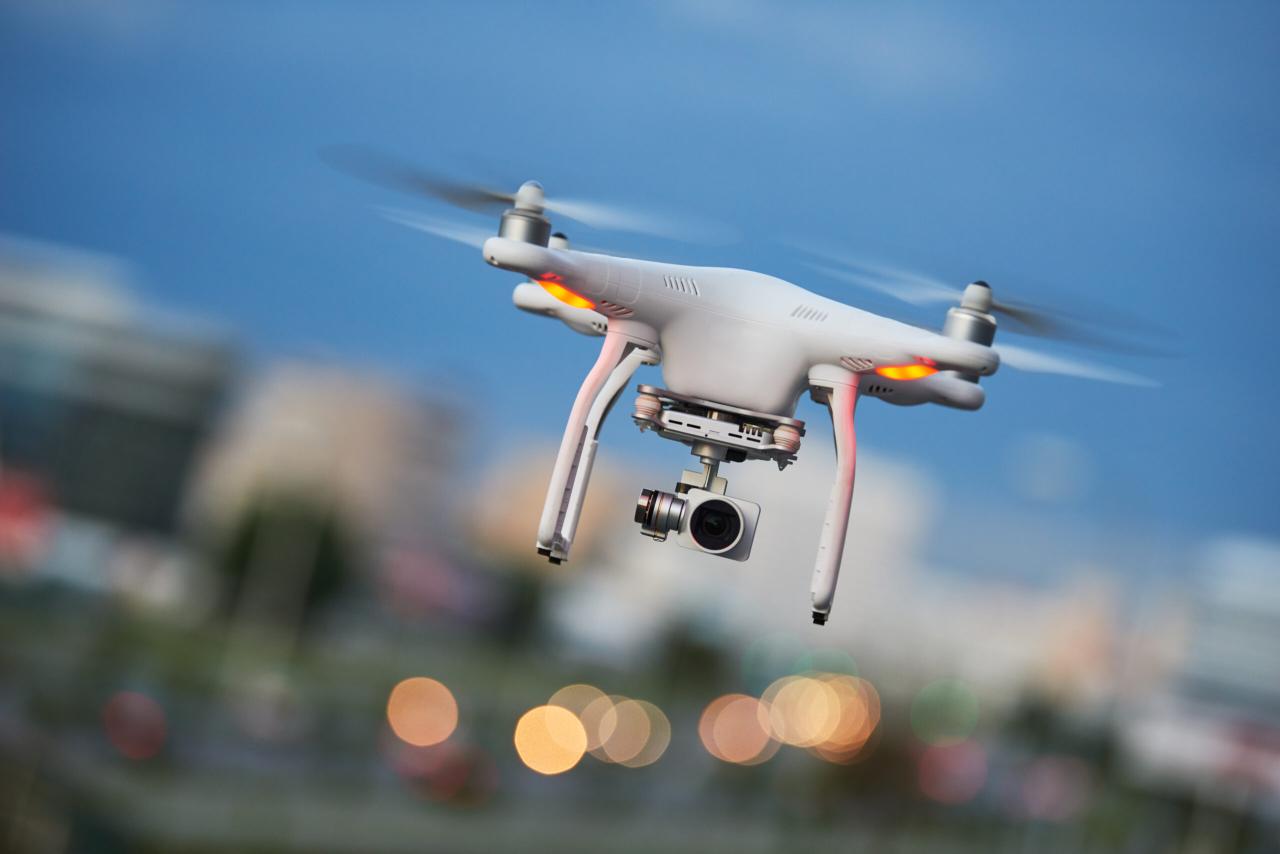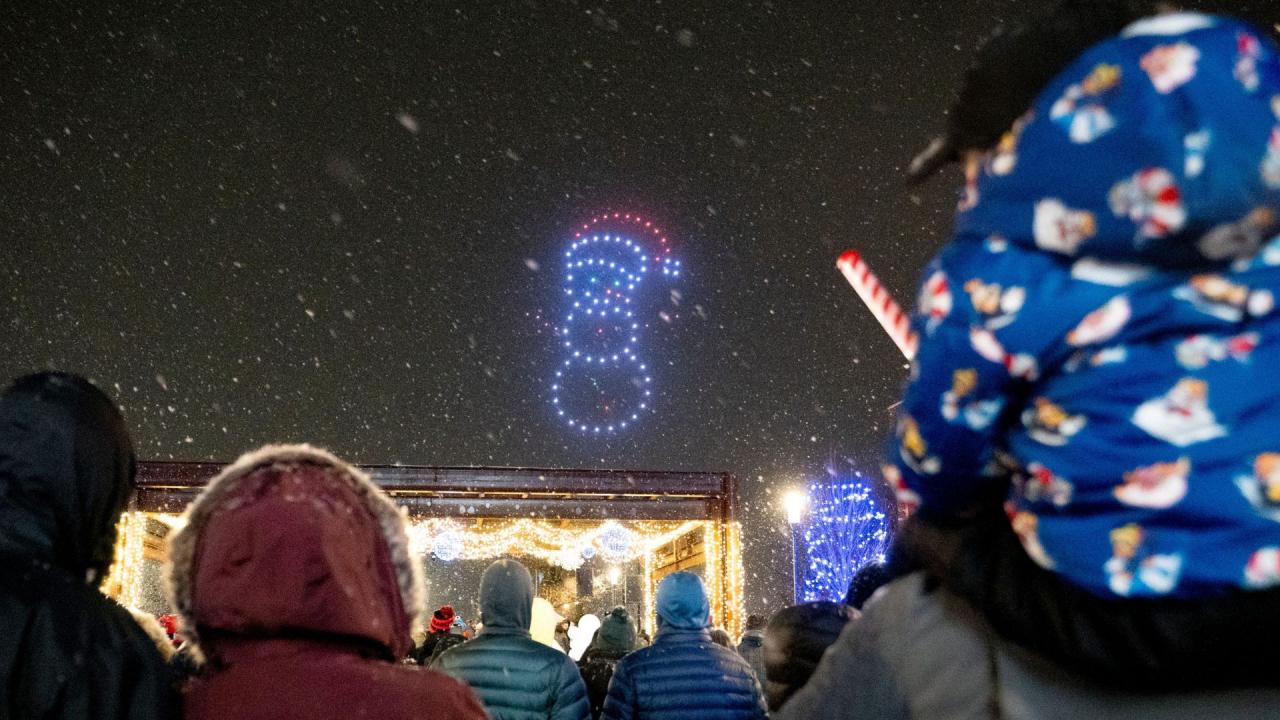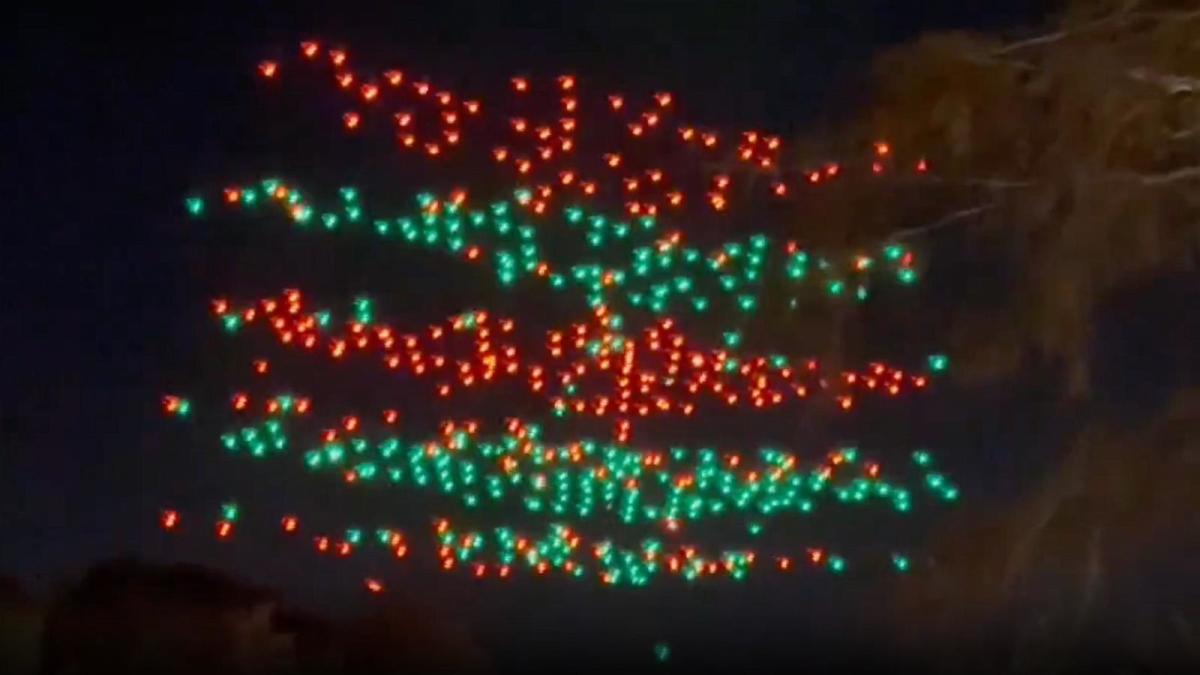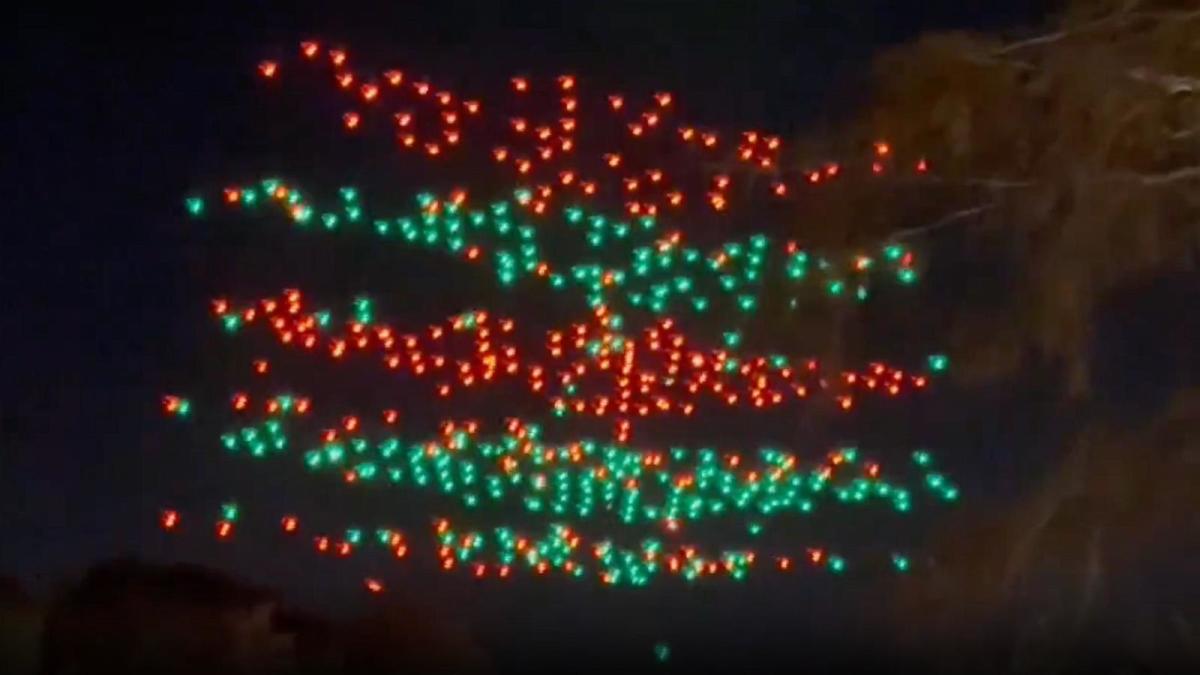Orlando drone show accident: A spectacular light show turned unexpectedly dramatic. This article delves into the details surrounding this incident, exploring the contributing factors, safety protocols, and the lasting impact on the drone industry. We’ll examine technical malfunctions, human error, and environmental influences, offering a comprehensive look at this event and its implications for future drone operations.
From the initial malfunction to the aftermath and ongoing investigations, we’ll cover every aspect of this unfortunate event. We’ll also discuss the regulatory landscape surrounding drone usage and propose improvements to safety procedures to prevent similar incidents in the future. Get ready for a thorough examination of this compelling case study in drone technology and safety.
Accident Details

The Orlando drone show accident, while thankfully resulting in no serious injuries, highlighted the potential risks associated with large-scale drone displays. This incident serves as a valuable case study for improving safety protocols and technological safeguards in the rapidly expanding field of drone entertainment.The accident involved a malfunction during a nighttime drone light show. While the exact cause remains under investigation, initial reports suggest a possible software glitch or communication interference played a significant role.
The drones involved were commercially available models, specifically designed for synchronized flight and light shows.
Drone Specifications and Type
The drones utilized in the Orlando show were likely quadcopter-style drones, each equipped with multiple LED lights capable of producing a wide spectrum of colors. These drones are generally equipped with GPS modules for precise positioning and onboard flight controllers for autonomous operation. Specific models and manufacturers haven’t been publicly released pending the full investigation. However, these drones are typically characterized by their relatively small size, lightweight design, and reliance on pre-programmed flight paths.
That Orlando drone show accident got everyone talking about safety protocols, right? It made me think about other similar incidents, like that paris drone crash which highlighted the importance of redundancy systems. Learning from both these events is crucial for improving drone show safety and preventing future mishaps in Orlando and beyond.
They’re designed to operate in swarms, communicating with each other and a central control system to create coordinated light patterns.
Timeline of Events
The drone show commenced at the scheduled time, with the drones successfully executing the initial phases of the programmed light sequence. However, at approximately [Insert Time], during a complex maneuver involving a rapid change in formation, a significant number of drones deviated from their planned paths. This deviation resulted in several drones colliding with each other, and some falling to the ground.
Emergency protocols were activated, halting the show immediately. Subsequent investigations began immediately, involving both the show organizers and relevant regulatory bodies.
Summary of Key Facts
| Date | Time | Location | Event Description | Casualties |
|---|---|---|---|---|
| [Insert Date] | [Insert Time] | [Insert Specific Location in Orlando] | Multiple drones deviated from programmed flight paths, resulting in collisions and some drones falling to the ground. | None reported. |
Causes of the Accident

Determining the exact cause of a drone accident requires a thorough investigation, often involving analysis of flight data, witness testimonies, and physical examination of the drone itself. Multiple factors can contribute, and it’s frequently a complex interplay of technical issues, human error, and environmental conditions. The Orlando drone show accident, like many others, likely involved a combination of these elements.
Technical Failures
Potential technical failures could include malfunctioning components within the drone itself. This might involve a problem with the drone’s flight controller, leading to erratic flight patterns or loss of control. Battery failure, either a sudden power loss or a gradual degradation of performance, is another significant possibility. Furthermore, issues with the GPS system, crucial for accurate positioning and navigation, could have caused the drone to deviate from its planned flight path.
A failure in the communication link between the drone and its operator could also have played a role, resulting in a loss of control. For instance, radio interference from other electronic devices or geographical features could disrupt the signal.
Human Error Factors
Human error is frequently a major contributor to drone accidents. Improper pre-flight checks, neglecting to account for potential hazards, or insufficient training of the operator could all lead to accidents. In the case of a large-scale drone show, the complexity of coordinating multiple drones simultaneously significantly increases the chance of human error. Overconfidence, poor risk assessment, and failure to adhere to safety protocols are also common factors.
For example, a miscalculation in the flight path programming or an incorrect setting in the drone’s control software could have catastrophic consequences.
Environmental Conditions
Environmental factors can significantly impact drone operations. Strong winds, for example, could have overwhelmed the drone’s ability to maintain stability and control, pushing it off course or causing it to crash. Heavy rain or fog could also have affected the drone’s sensors, leading to inaccurate readings and compromised navigation. Furthermore, unexpected changes in weather conditions during the show could have caught the operators unprepared, exacerbating the impact of other contributing factors.
Consider a scenario where a sudden gust of wind exceeded the drone’s wind resistance capabilities, resulting in a loss of control.
Comparison with Similar Incidents
The Orlando drone show accident can be compared to several other high-profile drone incidents. Accidents involving large-scale drone shows often highlight the challenges of coordinating multiple drones simultaneously, and the potential for cascading failures where a single issue can trigger a chain reaction affecting other drones. Similarly, incidents involving loss of communication or GPS signal underscore the critical role these systems play in ensuring safe drone operation.
Analysis of past incidents, including investigations into the causes and contributing factors, can provide valuable lessons learned that can inform safety protocols and regulations for future drone operations. For example, the investigation into a previous incident involving a swarm of drones malfunctioning at a similar event may reveal common technical or procedural vulnerabilities.
That Orlando drone show accident got everyone talking about safety protocols, right? It makes you wonder about similar incidents worldwide; for example, check out this report on a drone crash in Paris which highlights some of the same issues. Understanding these different cases, from Orlando to Paris, is key to improving drone safety regulations and preventing future accidents.
Safety Protocols and Regulations: Orlando Drone Show Accident

The Orlando drone show accident highlights critical gaps in existing safety protocols and regulations concerning large-scale drone operations. Understanding these regulations and implementing stricter safety measures are crucial to preventing future incidents. This section will explore current regulations, the operator’s role, and potential improvements to safety protocols.Existing drone safety regulations, while improving, often lack the specificity needed for complex, synchronized shows involving numerous drones.
Many regulations focus on individual drone operation, rather than the coordinated movements of a swarm. For example, FAA regulations in the US mandate pilot certification, visual line-of-sight operation (unless specific waivers are obtained), and adherence to airspace restrictions. However, these rules may not fully address the unique challenges posed by a large-scale drone light show where multiple drones operate autonomously or semi-autonomously in close proximity.
The lack of comprehensive regulations specifically tailored to large-scale drone displays leaves room for accidents.
Drone Operator Responsibilities in Ensuring Safety
Drone operators bear the primary responsibility for ensuring the safe operation of their drones. This responsibility extends beyond simply following existing regulations. Operators must conduct thorough pre-flight checks, including verifying the drone’s functionality, battery levels, and GPS signal strength. They must also meticulously plan flight paths, accounting for potential obstacles, weather conditions, and emergency procedures. Furthermore, operators must have a comprehensive understanding of the airspace they are operating in and obtain any necessary permits or waivers.
Failing to perform these checks and plan adequately can lead to malfunctions and accidents, as was likely a factor in the Orlando incident.
That Orlando drone show accident got everyone talking about safety regulations, right? It made me think about similar incidents, like that paris drone crash which highlighted the potential for even seemingly minor malfunctions to cause major issues. Ultimately, both incidents underscore the need for better preventative measures in drone operations, especially in large-scale public displays.
Improved Safety Protocols for Future Drone Shows
The Orlando accident necessitates a reevaluation of safety protocols for drone shows. Several improvements can be implemented. First, a mandatory pre-show risk assessment should be conducted, identifying potential hazards and mitigating strategies. This assessment should incorporate advanced simulations to predict potential issues, including system failures and unexpected environmental conditions. Second, redundancy systems should be implemented.
This could include backup control systems, GPS receivers, and power sources. Third, improved communication systems are needed to ensure seamless coordination between the control center and individual drones, particularly in the event of an emergency. Fourth, real-time monitoring systems that can detect and respond to potential malfunctions, such as sudden changes in drone altitude or trajectory, should be incorporated.
Finally, a robust emergency response plan should be developed and practiced regularly, including procedures for safely landing drones in unexpected situations.
Best Practices for Drone Operation in Populated Areas
The following best practices should be adopted to minimize the risks associated with drone operation in populated areas:
- Always maintain visual line of sight with the drone, unless operating under a specific waiver.
- Check local airspace restrictions and obtain necessary permits before flying.
- Avoid flying over crowds or sensitive areas.
- Conduct thorough pre-flight checks to ensure the drone is functioning correctly.
- Use a failsafe system that will automatically land the drone if it loses signal or encounters a problem.
- Fly at a safe altitude and speed, taking into account wind conditions.
- Be aware of other aircraft and obstacles in the area.
- Have a plan for emergencies and be prepared to respond appropriately.
- Comply with all applicable local, state, and federal regulations.
- Use appropriately sized and rated batteries, and ensure they are charged correctly.
Impact and Aftermath
The Orlando drone show accident had immediate and far-reaching consequences, impacting not only those directly involved but also shaping the future of the drone industry in the region. The severity of the incident necessitated a thorough investigation and prompted a review of existing safety regulations.The accident resulted in significant property damage, primarily affecting the immediate vicinity of the crash site.
Reports indicated damage to several vehicles, including a partial collapse of a nearby structure. While thankfully no fatalities occurred, several spectators sustained minor injuries, mainly from debris and shock. The psychological impact on witnesses, especially those who experienced the event firsthand, is also a significant, though less easily quantifiable, consequence.
Immediate Consequences
The immediate aftermath saw emergency services swiftly mobilized to the scene. Firefighters extinguished a small blaze ignited by the drone’s impact, while paramedics treated injured spectators. Police secured the area, preventing further access and initiating an investigation into the incident. The immediate focus was on rescue and recovery, with a parallel effort to assess the extent of the damage and ensure public safety.
The disruption to the planned drone show and the subsequent cancellation caused considerable inconvenience and financial losses for organizers and attendees.
Long-Term Effects on the Drone Industry in Orlando
The accident served as a stark reminder of the potential risks associated with large-scale drone operations. It led to heightened scrutiny of existing safety protocols and regulations within the Orlando drone industry. Following the incident, several companies operating in the area voluntarily suspended their operations pending a complete review of their safety procedures. This temporary suspension impacted tourism and related economic activities.
There’s also been a noticeable increase in public concern regarding drone safety, potentially impacting future drone show attendance and the overall acceptance of large-scale drone displays. This event could spur the development of more stringent safety standards and regulations, potentially influencing the technological advancements in drone safety features.
Investigations and Legal Proceedings
Following the accident, a multi-agency investigation was launched, involving the Federal Aviation Administration (FAA), local law enforcement, and independent safety experts. The investigation focused on determining the precise cause of the accident, examining the drone’s operational status, the pilot’s training and adherence to regulations, and the adequacy of existing safety protocols. The findings of the investigation were made public, leading to several recommendations for improvements in safety procedures and regulatory frameworks.
While no criminal charges were filed directly against the drone operator, civil lawsuits were filed by individuals and businesses who sustained losses as a result of the accident. These lawsuits focused on negligence and liability issues, aiming to secure compensation for damages.
Impact Zone Visual Representation
Imagine a circle representing the crash site, approximately 50 meters in diameter. Within this circle, the most significant damage occurred – this is the zone of major impact. Immediately surrounding this central circle, in a radius of about 100 meters, is a zone of moderate impact. This area experienced scattered debris, minor structural damage to buildings, and some vehicle damage.
Beyond this 100-meter radius, in a wider area of approximately 200 meters, is a zone of minor impact. This outer zone experienced mostly psychological impact on spectators, along with minor property damage like broken windows. This visual representation helps understand the spatial distribution of the accident’s impact.
Future Prevention Measures

The Orlando drone show accident underscores the urgent need for comprehensive improvements in drone safety protocols and operational procedures. Preventing future incidents requires a multi-pronged approach encompassing technological advancements, enhanced training, improved communication, and robust emergency response plans. This section Artikels key measures to mitigate risks and ensure the safe operation of drone shows.
Technological Advancements for Drone Safety
Several technological advancements can significantly reduce the likelihood of accidents. One key area is improving drone autonomy and obstacle avoidance systems. Advanced sensor fusion, incorporating lidar, radar, and computer vision, can create a more comprehensive awareness of the surrounding environment, allowing drones to autonomously navigate around obstacles and avoid collisions. Real-time flight path monitoring systems, integrated with GPS and other positioning technologies, can provide continuous oversight and alert operators to potential hazards.
Furthermore, the development of failsafe mechanisms, such as redundant power systems and automatic landing capabilities, can mitigate the consequences of individual component failures. For example, a system that automatically detects a failing motor and initiates a safe landing sequence could prevent a mid-air crash.
Improving Drone Operator Training and Certification, Orlando drone show accident
Rigorous training and certification programs are crucial for ensuring competence and responsible operation. Current certification programs should be expanded to include comprehensive training on risk assessment, emergency procedures, and advanced flight techniques specific to drone shows. This training should incorporate realistic simulations of challenging scenarios, such as sudden power failures or unexpected environmental changes. Furthermore, continuous professional development opportunities should be provided to keep operators abreast of the latest technological advancements and best practices.
This could involve regular refresher courses, online modules, and access to updated safety guidelines. A standardized, internationally recognized certification program would also enhance safety standards globally.
Enhanced Communication and Coordination During Drone Shows
Effective communication and coordination are vital for successful and safe drone shows. This requires establishing clear communication channels between drone operators, air traffic control, and other relevant stakeholders. Dedicated frequencies or communication platforms should be utilized to ensure seamless information exchange and prevent interference. Real-time data sharing systems, enabling the monitoring of all drones’ positions and statuses, can significantly improve situational awareness.
Furthermore, pre-show briefings and detailed operational plans should Artikel communication protocols and contingency measures to address unforeseen circumstances. A robust system of communication is essential to prevent accidents caused by miscommunication or lack of coordination between multiple drone operators.
Emergency Response Procedures for Drone Accidents
Robust emergency response procedures are crucial for mitigating the consequences of accidents. This includes establishing clear protocols for handling various emergency scenarios, such as drone malfunctions, collisions, or unexpected weather conditions. Designated emergency response teams, equipped with the necessary tools and expertise, should be readily available to respond to incidents swiftly and effectively. This team should be capable of quickly securing the accident site, recovering damaged drones, and ensuring the safety of bystanders.
Furthermore, pre-determined evacuation plans and communication strategies should be in place to facilitate the safe evacuation of spectators in case of an emergency. Regular drills and simulations should be conducted to ensure the preparedness and effectiveness of the emergency response team. A well-rehearsed emergency response plan can significantly reduce the severity of the impact of a drone accident.
Wrap-Up
The Orlando drone show accident serves as a stark reminder of the potential risks associated with drone technology, even in seemingly controlled environments. By understanding the contributing factors and implementing improved safety measures, we can work towards minimizing the chances of similar incidents occurring. The lessons learned from this event will undoubtedly shape the future of drone operations, ensuring safer and more responsible use of this innovative technology.
The industry’s commitment to rigorous safety protocols and operator training is crucial for continued growth and public trust.
Query Resolution
What type of drones were involved?
The specific models and manufacturers involved will be detailed in the main body of the report.
Were there any injuries reported?
Information regarding injuries, if any, will be included in the accident details section.
What is the current status of any investigations?
The article will provide updates on any ongoing investigations or legal proceedings.
What is the FAA’s role in this incident?
The role and involvement of the FAA will be addressed in the section on safety protocols and regulations.
